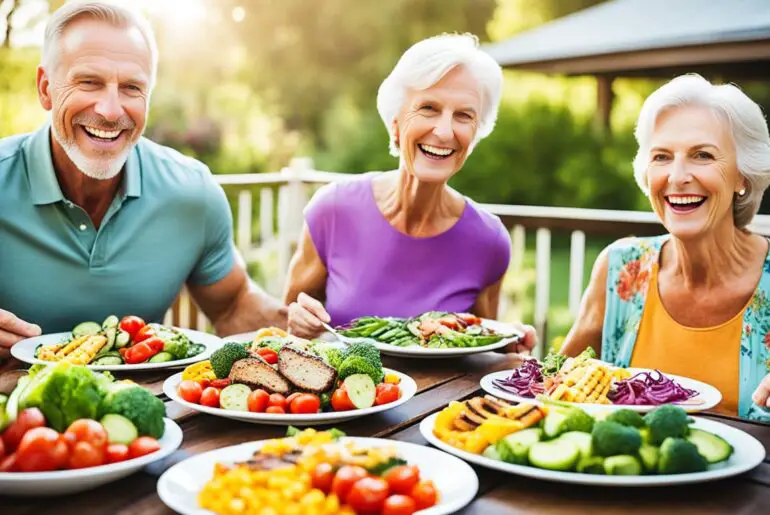Are you looking for a way to kickstart your weight loss journey with delicious and healthy meals? Look no further than the Phase 1 HCG Diet Recipe Guide. This comprehensive guide provides you with a variety of mouthwatering recipes that are perfect for the first phase of the HCG diet. Say goodbye to boring and tasteless diet food – with these recipes, you’ll never feel like you’re depriving yourself.
During Phase 1 of the HCG diet, also known as the weight loss phase, it’s important to follow a specific meal plan that helps prepare your body for the subsequent phases. The recipes in this guide are carefully designed to meet the guidelines and requirements of Phase 1, ensuring that you stay on track and maximize your weight loss potential.
Whether you’re craving a hearty breakfast, a satisfying lunch, a flavorful dinner, or a wholesome snack, the Phase 1 HCG Diet Recipe Guide has you covered. From protein-packed meals to refreshing salads and mouthwatering desserts, you’ll find a wide range of options to suit your taste buds and dietary needs.
Don’t settle for bland and boring diet food. Discover the delicious possibilities of Phase 1 with the help of this recipe guide. Get ready to embark on a journey of flavorful and healthy eating that will make every meal a joy to savor.
Key Takeaways:
- The Phase 1 HCG Diet Recipe Guide offers a variety of tasty and healthy recipes for the weight loss phase of the HCG diet.
- These recipes are designed to meet the guidelines and requirements of Phase 1, ensuring optimal weight loss results.
- From breakfast to dinner and everything in between, you’ll find a wide range of flavorful options to suit your taste buds.
- Say goodbye to bland and boring diet food and discover the delicious possibilities of Phase 1.
- With the Phase 1 HCG Diet Recipe Guide, every meal will be a joy to savor on your weight loss journey.
The History of the HCG Diet
The HCG diet has a fascinating history that dates back to the early 1930s, making it far from a modern-day fad. It was developed by a brilliant scientist named Albert Simeons, who made a groundbreaking discovery about the HCG hormone and its impact on weight loss.
Simeons conducted extensive research in India, where he focused on studying the effects of the HCG hormone on obesity. His discoveries were remarkable – he found that HCG helped disperse bad fat from specific areas of the body and kickstarted a process that led to significant weight loss. This groundbreaking finding paved the way for the development of the HCG diet protocol, which remains widely recognized today.
I was astounded by the results of my research on the HCG hormone and its ability to mobilize fat stores in the body. It was a breakthrough moment that ultimately led to the creation of the HCG diet.
The effectiveness of the HCG hormone in promoting weight loss is a testament to the thoroughness and dedication of Albert Simeons’ research. His pioneering work has provided a lifeline to countless individuals struggling with obesity, offering them a viable path toward achieving their weight loss goals.
The Three Phases of the HCG Diet
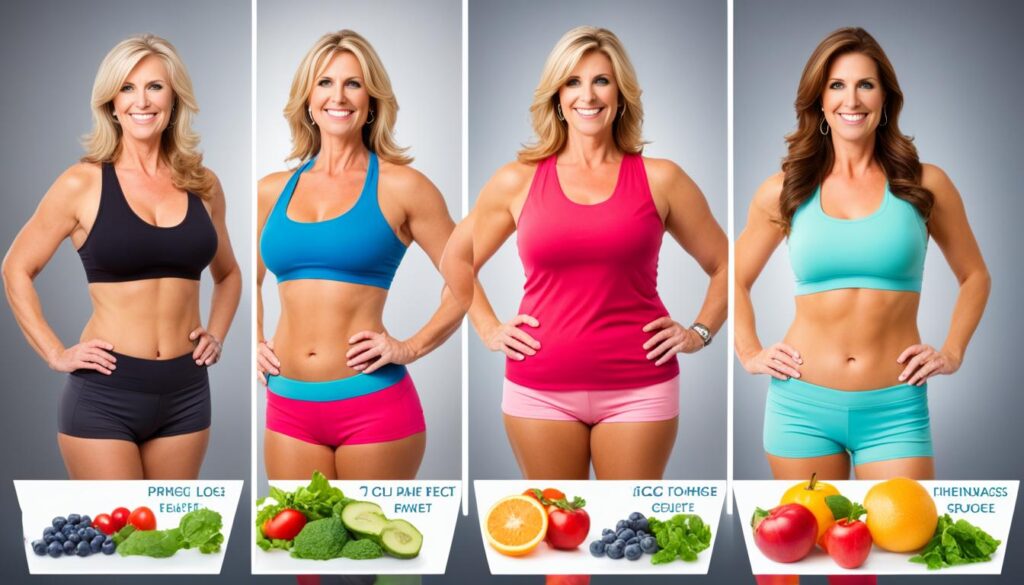
The HCG diet consists of three distinct phases, each with its own objectives and guidelines. These phases are crucial for achieving successful and sustainable weight loss results. Let’s take a closer look at each phase:
Phase 1: Fat Loading Phase
Phase 1, also known as the fat loading phase, spans over two days. During this phase, you will consume high-fat foods to prepare your body for the calorie-restricted portion of the diet. The purpose of this phase is to stock your body with normal fat cells and initiate the process of burning abnormal fat in the subsequent phase.
This phase is essential for the success of the HCG diet as it sets the foundation for rapid weight loss. By strategically consuming high-fat foods, you prime your body to efficiently burn stored fat during the diet phase.
In this phase, it’s recommended to consume healthy fats such as avocado, olive oil, nuts, and fatty fish.
Phase 2: Diet Phase
Phase 2, the diet phase, is where the calorie restriction comes into play. This phase typically lasts several weeks and involves following a strict 500-calorie per day meal plan. During this phase, you will focus on consuming lean proteins, specific vegetables, and a limited amount of fruits.
The purpose of the diet phase is to trigger rapid weight loss by promoting a calorie deficit while providing essential nutrients. You’ll experience significant fat loss during this phase, thanks to the combination of the HCG hormone and the low-calorie intake.
Here’s a sample breakdown of the daily calorie distribution:
| Food Group | Calorie Allocation |
|---|---|
| Proteins | 100 calories |
| Vegetables | 100 calories |
| Fruits | 100 calories |
| Grains | 100 calories |
| Fats | 50 calories |
| Dairy | 50 calories |
By strictly adhering to the recommended food choices and portion sizes, you will optimize weight loss during the HCG diet.
Phase 3: Maintenance Phase
The final phase of the HCG diet is Phase 3, also known as the maintenance phase. In this phase, the focus shifts to stabilizing weight loss and reintroducing certain foods back into your diet while avoiding starches and sugars.
During this phase, you will gradually increase your calorie intake while closely monitoring your weight to ensure it stays within a certain range. This is crucial for transitioning from the strict diet phase to a more sustainable long-term eating pattern.
Stabilizing your weight and gradually reintroducing foods during this phase is key to maintaining your weight loss results and establishing a healthier lifestyle.
The Fat Loading Phase (Phase 1)
The fat loading phase is a crucial part of the HCG diet, as it sets the foundation for the rest of the program. During the first two days of Phase 1, I focus on consuming high-fat foods while taking HCG drops three times a day. This phase serves two important purposes: stocking the body with normal fat cells and preparing it to burn abnormal fat during the diet phase.
To optimize the fat loading phase, it’s essential not to skip this step. By indulging in high-fat foods, I’m helping my body build up its fat reserves, which will be used as energy during the next phase. This loading process kickstarts the metabolism and helps the body transition into fat-burning mode.
During these two days, I make sure to choose healthy sources of fat, such as avocados, nuts, seeds, olive oil, and fatty fish. These foods provide essential nutrients and support overall wellbeing. It’s important to note that the fat loading phase doesn’t give me free rein to indulge in unhealthy junk food. I focus on consuming nutritious, high-fat foods that benefit my body.
By adhering to the fat loading phase and following the recommended HCG drops protocol, I prepare my body for the subsequent phases of the HCG diet. This thorough preparation enables me to achieve rapid and sustainable weight loss throughout the program.
Benefits of the Fat Loading Phase:
- Stocks the body with normal fat cells
- Prepares the body to burn abnormal fat
- Kickstarts the metabolism
- Supports sustainable weight loss during the HCG diet
The fat loading phase is a crucial step in the HCG diet, and it shouldn’t be overlooked. By properly fueling my body with healthy high-fat foods and HCG drops, I set the stage for successful weight loss and overall wellbeing.
| High-Fat Foods for the Fat Loading Phase |
|---|
| Avocado |
| Nuts and seeds |
| Olive oil |
| Fatty fish (salmon, mackerel, sardines) |
The Diet Phase (Phase 2)
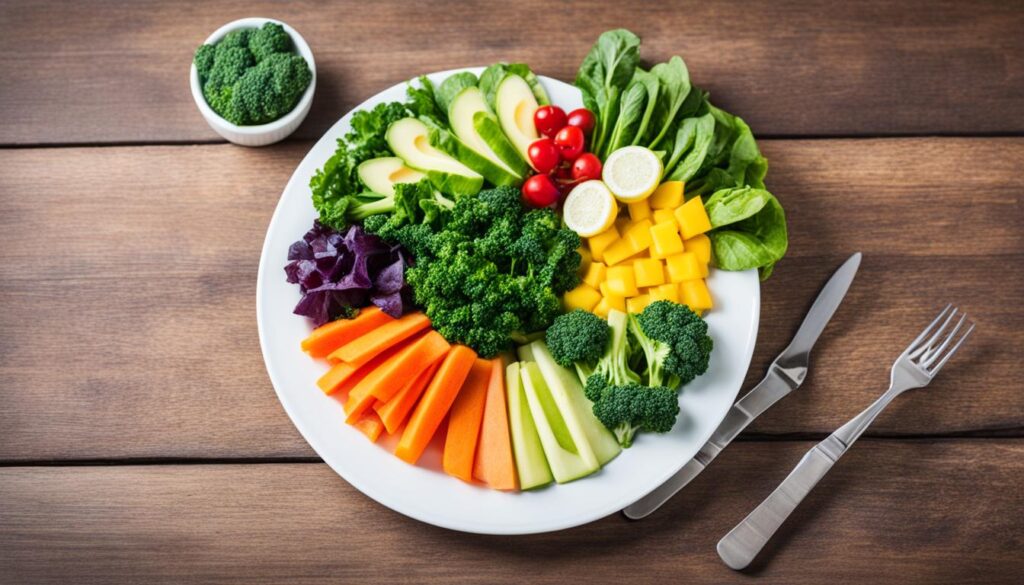
The diet phase, also known as Phase 2 of the HCG diet, is the most crucial and challenging stage of the program. During this phase, participants are required to follow a strict 500-calorie per day meal plan that is designed to promote rapid weight loss. Adhering to the guidelines and portion sizes during this phase is essential for achieving the best results and maximizing overall weight loss.
Throughout the diet phase, you will need to carefully select protein servings, vegetable choices, and fruit options to ensure you stay within the calorie limit while receiving adequate nutrition. Let’s take a closer look at what each category entails:
Protein Servings:
- Veal
- Beef
- Chicken breast
- Fresh white fish
- Lobster
- Crab
- Shrimp
Vegetable Choices:
- Spinach
- Chard
- Tomatoes
- Cucumbers
- And many more…
Fruit Options:
- Apples
- Oranges
- Strawberries
- Grapefruit
- And a variety of other fruits…
By carefully selecting from these lists, you can create meals and snacks that will keep you satisfied while staying within the strict 500-calorie limit. It is important to note that during this phase, you should avoid any foods that are not listed as approved protein servings, vegetable choices, or fruit options.
Remember, the diet phase might be challenging, but it is a crucial step in your journey towards achieving your weight loss goals on the HCG diet. By sticking to the guidelines and making smart choices about your protein, vegetable, and fruit intake, you will be on your way to experiencing successful weight loss during this phase.
The Maintenance Phase (Phase 3)
In the maintenance phase, which is the final phase of the HCG diet, the focus shifts towards stabilizing weight loss and reintroducing starches into the diet. This phase plays a critical role in maintaining your new weight and transitioning back to a more regular eating pattern.
During the maintenance phase, you will gradually increase your calorie intake while closely monitoring your weight to ensure it stays within a certain range. This allows your body to adjust to the new calorie level and stabilize your weight loss. It is important to remember that this phase is essential for long-term weight maintenance.
Reintroduction of Starches:
One of the key aspects of the maintenance phase is the reintroduction of starches into your diet. These include foods such as bread, rice, pasta, and potatoes. However, it is crucial to reintroduce these starches gradually and in moderation to avoid weight gain.
Monitoring Calorie Intake:
As you increase your calorie intake during the maintenance phase, it is important to monitor the number of calories you consume. This can be achieved by tracking your daily calorie intake and ensuring it does not exceed the recommended range for weight stabilization.
Tracking Weight:
Closely monitoring your weight during the maintenance phase is essential in ensuring that it stays within the desired range. Regular weigh-ins can help you identify any fluctuations and make necessary adjustments to your diet and exercise routine.
To visually illustrate the maintenance phase and its importance, here is a comprehensive table:
| Phase | Focus | Key Objective |
|---|---|---|
| Maintenance Phase (Phase 3) | Stabilizing Weight Loss | Reintroducing Starches Monitoring Calorie Intake Tracking Weight |
Food Guidelines for Phase 2
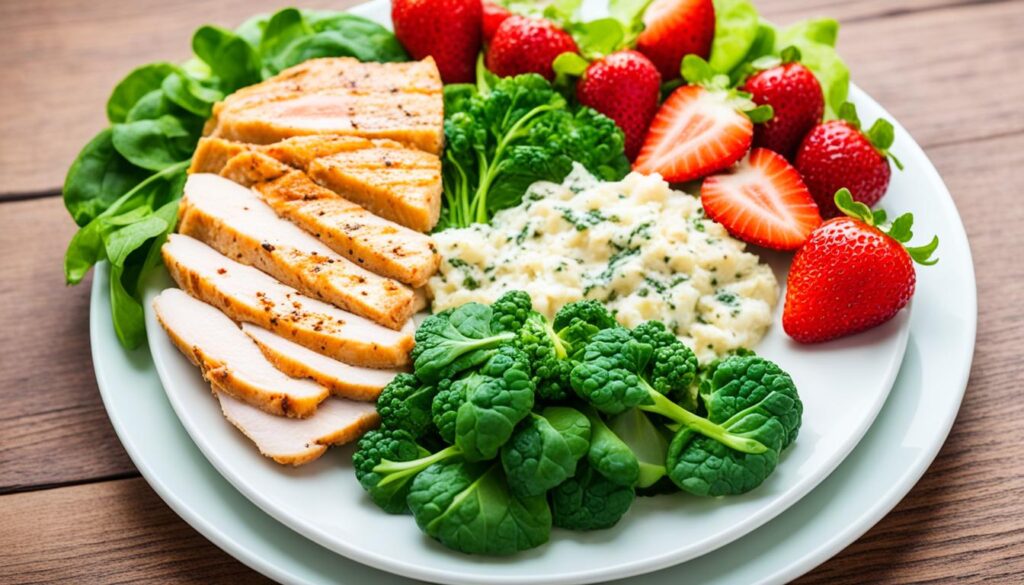
During Phase 2 of the HCG diet, it is crucial to follow specific food guidelines to achieve optimal weight loss results. These guidelines ensure that you are getting proper nutrition while keeping your calorie intake low. Here are the approved foods, protein choices, and vegetable options for Phase 2:
Approved Protein Choices:
- Veal
- Beef
- Chicken Breast
- Fresh White Fish
- Lobster
- Crab
- Shrimp
Vegetable Options:
- Spinach
- Chard
- Tomatoes
- Cucumbers
These approved protein choices and vegetable options give you a variety of foods to include in your Phase 2 meals. It is important to note that portion sizes should be measured and controlled to maintain the recommended calorie intake for Phase 2 of the HCG diet.
Why These Food Choices Matter
Choosing the right foods during Phase 2 of the HCG diet is essential for several reasons. Firstly, the approved protein choices provide you with essential amino acids and nutrients while keeping your calorie intake in check. These proteins are lean sources of meat that can help support muscle maintenance and prevent muscle loss during the calorie-restricted diet phase.
Additionally, the vegetable options offer a variety of vitamins, minerals, and fiber. They contribute to your overall nutrition while adding flavor and variety to your meals. Incorporating these vegetables can help you feel satisfied and maintain a balanced diet during Phase 2.
Tip: To add more flavor to your meals, experiment with different spices and seasoning options that are allowed on the HCG diet. This can help you enjoy your meals while sticking to the approved food choices.
Remember, the HCG diet is a precise protocol that requires adherence to the designated food guidelines for each phase. Following the approved protein choices and vegetable options will ensure that you are on track for successful weight loss during Phase 2 of the HCG diet.
Helpful Tips to Stay on Protocol
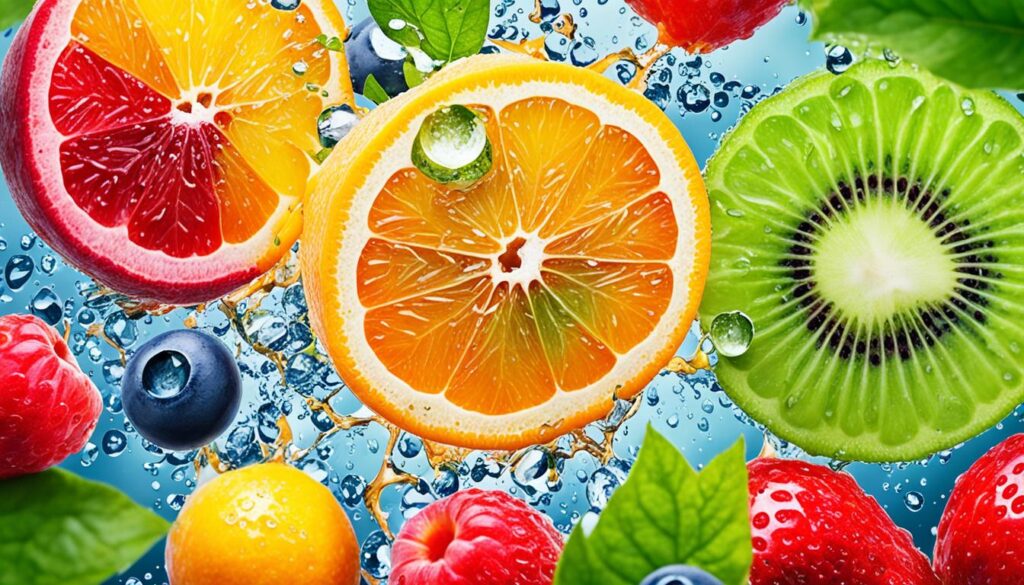
Staying on protocol during the HCG diet can be challenging, but with some helpful tips and tricks, you can make the process easier. Here are a few strategies to help you stay motivated and on track throughout your HCG diet journey:
1. Incorporate Green Tea into Your Daily Routine
Green tea is a great addition to your HCG diet plan. Not only is it hydrating, but it also offers natural detoxification properties and can help boost your metabolism. Try swapping your regular beverages with green tea to reap the benefits.
2. Limit the Consumption of Apples
While apples are allowed on the HCG diet, it’s important to limit their consumption. Apples contain natural sugars, which can affect weight loss if consumed in large quantities. Stick to the recommended portion size and enjoy them as an occasional treat.
3. Break Through Weight Loss Plateaus with Strategic Methods
Experiencing a weight loss plateau can be frustrating, but there are strategies to help you break through. Here are some plateau breakers to consider:
I. Increase Your Water Intake: Staying hydrated can support your metabolism and help flush out toxins. Aim for at least eight glasses of water per day.
II. Adjust Your Protein Intake: If you’re not seeing the desired results, try increasing or decreasing your protein servings to find the optimal balance for your body.
III. Implement an Apple Day: An apple day involves consuming only apples for a 24-hour period. This can help kickstart your weight loss by creating a calorie deficit.
Breaking through plateaus requires perseverance and experimentation to find what works best for your body. Don’t get discouraged, and keep trying different techniques to achieve your weight loss goals.
By following these tips, you can enhance your HCG diet experience and increase your chances of success. Remember to stay committed to the protocol and seek guidance from your healthcare provider or HCG diet coach for personalized advice.
Plateau Breakers
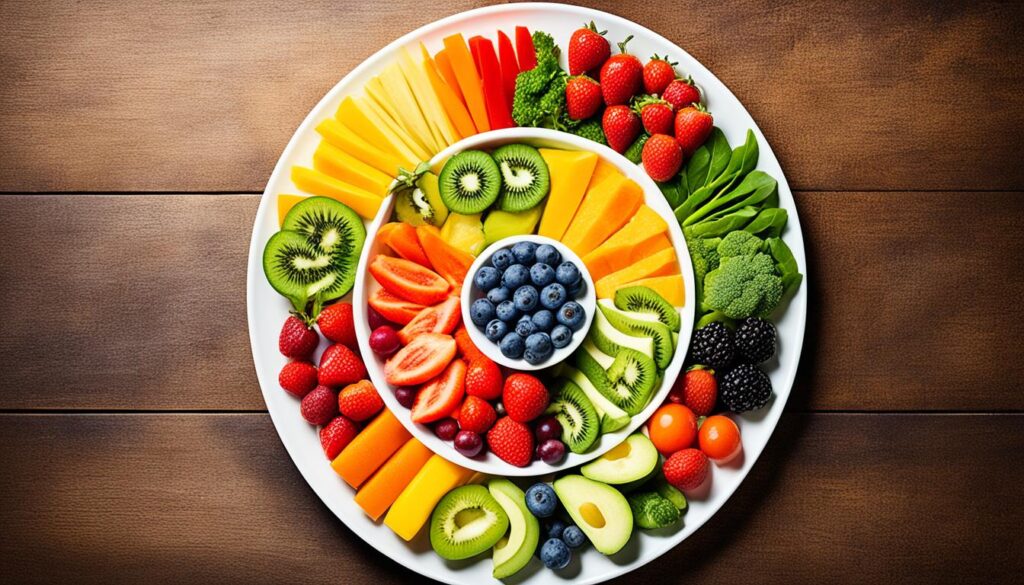
Plateaus are common during any weight loss journey, including the HCG diet. If you find yourself experiencing a plateau, there are several strategies you can try to break through. These include increasing your water intake, adjusting your protein intake, and implementing an apple day, where you only eat apples for a 24-hour period. These plateau breakers can kickstart weight loss and get you back on track.
Increasing Water Intake
One effective strategy to break through a plateau is to increase your water intake. Staying hydrated can help boost your metabolism, flush out toxins, and aid in digestion. Aim to drink at least 8-10 glasses of water per day and consider adding lemon or cucumber slices for a refreshing twist.
Adjusting Protein Intake
Your protein intake plays a crucial role in the HCG diet. If you’re experiencing a plateau, try adjusting the amount of protein you consume. Increasing or decreasing your protein servings can help stimulate your metabolism and promote weight loss. Consult with your healthcare provider or dietitian to determine the appropriate protein intake for your individual needs.
Implementing an Apple Day
An apple day is a technique used to break through plateaus on the HCG diet. During an apple day, you consume only six large apples throughout the day, spacing them out evenly. This low-calorie day can help reset your metabolism and jumpstart weight loss. Remember to drink plenty of water during your apple day to stay hydrated.
By implementing these plateau breakers, you can overcome weight loss plateaus and continue progressing on your HCG diet journey. Remember to consult with your healthcare provider or HCG diet expert before making any significant changes to your diet or exercise routine.
Tips and Hints to Break a Craving

Cravings can be a challenge while on the HCG diet, but there are several tips and hints that can help you overcome them. Here are some strategies to make it easier to stick to the HCG diet plan:
- Chew gum: When cravings strike, chewing gum can help satisfy the urge to munch on something. Opt for sugar-free gum to keep your calorie intake low.
- Treat yourself to HCG-approved desserts: Enjoying a sweet treat can help curb cravings. Look for HCG-approved dessert recipes that are low in calories and comply with the guidelines of the diet.
- Go for a walk: Engaging in physical activity like walking can help distract you from cravings. Take a brisk walk around the block or in a nearby park to shift your focus away from food.
- Follow up with water: Sometimes, cravings can be mistaken for dehydration. After going for a walk, drink a glass of water to ensure you’re properly hydrated and to further reduce the urge to eat.
- Enjoy a small pickle: Pickles are a satisfying and low-calorie snack that can help satisfy cravings. Keep a jar of small pickles on hand and enjoy one when cravings strike.
Remember, discipline and dedication are essential when following the HCG diet. By implementing these tips and tricks, you can successfully overcome cravings and stay on track towards your weight loss goals.
Craving-Busting Strategies
If you find yourself struggling with cravings, try implementing these strategies.
| Strategy | How it Helps |
|---|---|
| Chewing gum | Satisfies the need for oral gratification without consuming extra calories |
| Treating yourself to HCG-approved desserts | Provides a guilt-free indulgence that aligns with the HCG diet guidelines |
| Going for a walk | Shifts focus away from cravings and helps distract the mind |
| Following up with water | Ensures proper hydration and reduces the chances of mistaking thirst for hunger |
| Enjoying a small pickle | Offers a satisfying and low-calorie snack option |
These strategies can help you overcome cravings and maintain your progress on the HCG diet.
Phase 3: The Maintenance Phase
Phase 3 of the HCG diet, also known as the maintenance phase, is a crucial step in the journey towards long-term weight stabilization and maintenance. During this phase, you will gradually increase your calorie intake and reintroduce certain foods back into your diet. This transition is essential for establishing a healthy eating pattern and ensuring that you can maintain your new weight in the long run.
After completing Phase 2 of the HCG diet, where you followed a strict 500-calorie per day meal plan, Phase 3 allows for a more flexible approach to calorie intake. You will gradually increase your calorie consumption while closely monitoring your weight to ensure it remains stable within a certain range.
One of the primary goals of Phase 3 is to stabilize your weight at the new level achieved during Phase 2. This stabilization period is crucial to prevent any rapid weight regain and to allow your body to adjust to the changes it has undergone. By gradually reintroducing a wider variety of foods, your body can adapt to different calorie levels while maintaining a stable weight.
During Phase 3, you will focus on reintroducing foods that were restricted during Phase 2, such as healthy fats and complex carbohydrates. This gradual reintroduction allows you to assess how your body responds to different foods and determine which ones you can include in your long-term diet without triggering weight gain.
It is important to note that Phase 3 is not a free pass to indulge in unhealthy or highly processed foods. The emphasis should still be on whole, nutrient-dense foods to support your overall health and well-being. While you have more flexibility in terms of calorie intake, it is essential to make choices that align with a balanced and sustainable approach to eating.
Throughout Phase 3, it is crucial to continue monitoring your weight and making adjustments to your daily calorie intake as needed. Regularly weighing yourself and maintaining a food diary can help you stay accountable and make informed decisions about your calorie consumption.
Remember that the ultimate goal of Phase 3 is to establish long-term weight maintenance and develop healthy habits that will support your well-being beyond the HCG diet. By gradually reintroducing foods and monitoring your calorie intake, you can ensure that you maintain your hard-earned weight loss and continue to prioritize your health.
Conclusion
The Phase 1 HCG Diet Recipe Guide is a valuable resource for individuals embarking on the HCG diet. By following the guidelines and recipes provided in this guide, you can maximize your weight loss results during Phase 1 and beyond. The HCG diet is a long-term journey that requires dedication and adherence to the protocol for lasting success.
Committing to long-term weight maintenance is essential in order to sustain the positive outcomes achieved through the HCG diet. With the right mindset and the support of this guide, you can achieve your weight loss goals and maintain a healthier lifestyle. By incorporating the Phase 1 HCG Diet Recipe Guide into your daily routine, you can enjoy nutritious and delicious meals while reaping the benefits of the HCG diet.
Remember, the HCG diet success depends on your commitment and consistency. It’s important to stay motivated and stay focused on your goals. By following the Phase 1 HCG Diet Recipe Guide and making healthy choices, you can not only achieve significant weight loss but also establish long-term habits that will help you maintain your new weight. Make the most of this valuable resource and set yourself up for long-term weight maintenance and a healthier future.
FAQ
What is the Phase 1 HCG Diet Recipe Guide?
The Phase 1 HCG Diet Recipe Guide is a comprehensive resource that provides a variety of delicious and healthy recipes specifically designed for the first phase of the HCG diet. It includes meal ideas, helpful tips, and guidelines to help maximize your Phase 1 experience.
What is the history of the HCG diet?
The HCG diet has a rich history dating back to the early 1930s. It was developed by a scientist named Albert Simeons, who made a groundbreaking discovery about the HCG hormone and its role in weight loss. Simeons conducted extensive research in India and found that HCG hormone helped disperse bad fat from certain areas of the body, leading to significant weight loss.
What are the three phases of the HCG diet?
The HCG diet is divided into three phases. Phase 1 is the fat loading phase, Phase 2 is the diet phase, and Phase 3 is the maintenance phase.
What is the purpose of the Fat Loading Phase (Phase 1)?
The Fat Loading Phase, or Phase 1, is the first two days of the HCG diet. During this phase, you will take HCG drops and consume high-fat foods. This phase helps prepare the body for the calorie-restricted portion of the diet by stocking it with normal fat cells and priming it to burn abnormal fat during the diet phase.
What is the Diet Phase (Phase 2) of the HCG diet?
The Diet Phase, or Phase 2, is the most challenging and crucial phase of the HCG diet. It lasts for several weeks and involves following a strict 500-calorie per day meal plan. This phase includes specific protein servings, vegetable choices, and fruit options that must be adhered to for maximum weight loss.
What is the Maintenance Phase (Phase 3)?
The Maintenance Phase, or Phase 3, is the final phase of the HCG diet. It focuses on stabilizing weight loss and reintroducing certain foods back into the diet. During this phase, you will gradually increase your calorie intake while closely monitoring your weight to ensure it stays within a certain range.
What are the food guidelines for Phase 2 of the HCG diet?
Approved protein choices for Phase 2 of the HCG diet include veal, beef, chicken breast, fresh white fish, lobster, crab, or shrimp. Vegetable choices range from spinach and chard to tomatoes and cucumbers. These guidelines ensure proper nutrition while keeping calorie intake low.
What are some helpful tips to stay on protocol during the HCG diet?
Some tips include incorporating green tea into your routine, limiting apple consumption, and using specific strategies to break through weight loss plateaus. These tips can help you stay motivated and on track during the diet.
What are some plateau breakers for the HCG diet?
Plateaus are common during any weight loss journey, but there are strategies to break through them. Some options include increasing water intake, adjusting protein intake, and implementing an apple day, where you only eat apples for 24 hours. These techniques can jumpstart weight loss and help get you back on track.
How can I overcome cravings while on the HCG diet?
To overcome cravings, you can try chewing gum, treating yourself to HCG-approved desserts, going for a walk followed by drinking water, or enjoying a small pickle as a low-calorie snack. These strategies can help satisfy cravings while sticking to the HCG diet plan.
What is Phase 3 of the HCG diet?
Phase 3, also known as the Maintenance Phase, plays a crucial role in stabilizing weight loss and reintroducing certain foods back into the diet. It focuses on gradually increasing calorie intake while monitoring weight to maintain the desired weight range.
What is the conclusion of the Phase 1 HCG Diet Recipe Guide?
The Phase 1 HCG Diet Recipe Guide is a valuable tool for anyone following the HCG diet. By following the recipes and guidelines provided, you can maximize your weight loss results during Phase 1 and beyond. Success on the HCG diet requires dedication, adherence to the protocol, and a commitment to long-term weight maintenance.




